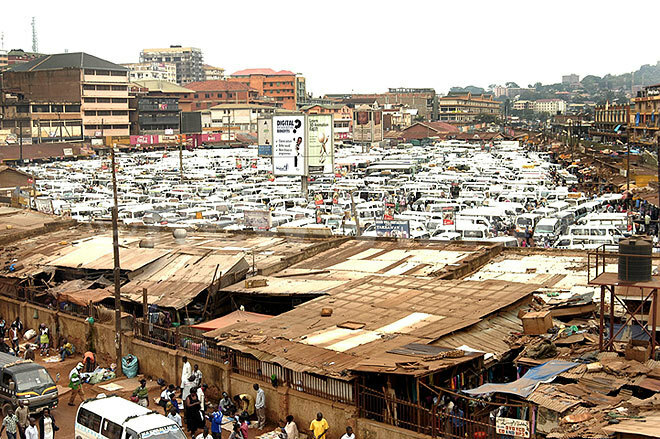Prioritize urban planning to design crime out
Urban planning, design and safety are inseparable.
PIC: An aerial view of part of Kampala city
OPINION: URBANIZATION & SECURITY

By Amanda A. Ngabirano
Uganda's urbanization quality apparently presents poor quality characteristics - irregular developments, overcrowding, disjointed and inefficient use of land - which all pose a safety challenge.
Urban planning, design and safety are inseparable.
Land use organization and arrangement, particularly housing, can be manipulated to foster safety, and the opposite is true. Poor or inadequate urban planning and design does not only put citizens' property at risk, but their lives too.
Research has it that as cities grow and expand, unprepared planning authorities tend to fail to cope with the consequent growth effects.
Over-crowding, irregular street layout and design, lack of lighting, uncontrolled traffic flow and management increase room for mischief in neighborhoods. If the layout and design are not properly done, even adequate surveillance cannot be efficiently done and may be rendered meaningless.
It also facilitates social crime because of the enhanced opportunity for the offenders to flee with ease. To make it worse, criminals tend to be more aware of what favors them and their plots than their targets in such areas.
One of the goals of urban planning is social equity.
When land use processes are excessively and dangerously 'democratic', where by people have so many freedoms to develop and manage land as they wish, social class gaps tend to manifest themselves even more because of the advantages and disadvantages each category of people has over space.

An aerial view of what the 'New Taxi Park' looked like before recent developments there
Urban planning and regeneration projects in most developing countries are taking the direction of 'dream' city rather than 'functional' cities. The former's focus tends to be on glamorous structures rather than efficiency and equity for all in the latter's focus.
Unfortunately, that approach is also, always, a fight against informality, therefore indirectly one against the poor. It tends to affect them more and immediately; given that they live from hand to mouth. As a consequence, the gap between the haves and have-nots widens, and consequently causes social unrest. This poses a social crime threat, which, not only favors criminals but also attracts more.
A good and sustainable urban planning approach is that which will carefully consider the short and long term threats of any action, on people's safety, livelihood, environment and the general efficiency of a functional city.
Without a deliberate effort to bridge the social class gap, by design and equitable use of space, the impact is easily manifested over space and socially. It is important to plan for a social mix to reduce social gaps.
Unlike the traditional style of urban planning, social mix concept has been seen as a reliable way of enabling dwellers live harmoniously. It implies socio-economic heterogeneity within neighborhoods; hence a possibility of checking deviant social behavior for it is always presumed that the standards of the lower are raised by mixing them with the upper class, and those of the upper class trimmed.
Other than bridging the social-economic gap as a measure of prevention against social crime, the most important tool that has to be integrated instead of focusing on surveillance, records and investigation of crime is to design out crime over space, which unfortunately isn't being mentioned and applied yet in Uganda. It is called Crime Prevention Through Environmental Design (CPTED).
The only way this concept can be applied is to prioritize and aggressively invest in urban planning in Uganda.
Then it will not only be about order but efficiency, equity, safety, economic growth, social inclusion and environmental conservation, among other objectives.
Urban planner and lecturer at Makerere University
amanda.ngabirano@gmail.com
Twitter: @mandyug